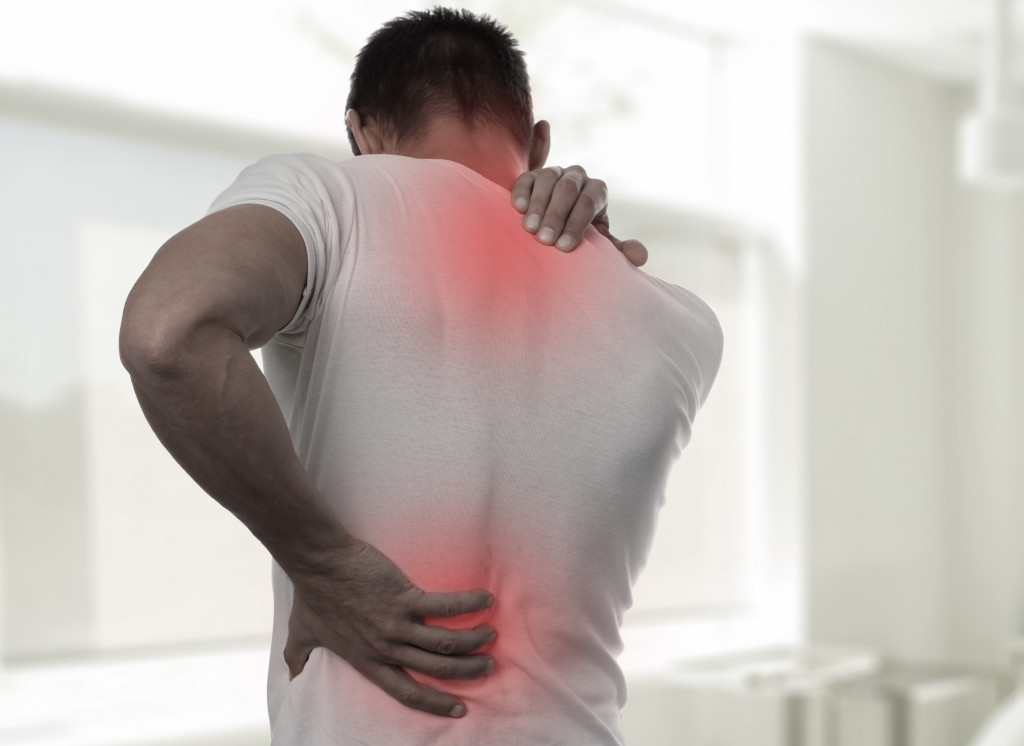Disclaimer: This website provides health information for educational purposes only and is not a substitute for professional medical advice, diagnosis, or treatment. Always seek the guidance of a qualified healthcare provider with any questions you may have.
• Common causes of lower back pain include poor posture, muscle strain, sciatica, osteoarthritis, and spondylolisthesisQA
• Diagnostic procedures such as imaging scans, laboratory tests, and physical exams can help with this.
• Solutions to lower back pain may include physical therapy, chiropractic care, massage therapy, and/or medications.
• Common practices that can help reduce pain include yoga, proper posture, and strengthening the core and lower back muscles.
Lower back pain can be debilitating and stop you from living your best life. The good news is that there are solutions to alleviate the pain. Here are some common causes of lower back pain, how to identify them, and how to find relief.
Common Causes of Lower Back Pain
You may have experienced lower back pain but may be unaware of the cause. Here are some of the most common causes:
Poor Posture
Many people have poor posture without even realizing it, which can lead to lower back pain. Poor posture may be due to long hours of sitting, spending too much time in the same position, or a lack of knowledge about properly sitting and standing. This may also be due to muscle imbalances that cause the spine to bend unnaturally.
Muscle Strain
Muscle strain can be caused by lifting heavy objects incorrectly, straining muscles during physical activity, or simply overusing them. Muscle strain can cause inflammation and increase the intensity of lower back pain. If you exercise or lift heavy objects, you may be at risk for this injury.
Sciatica
Sciatica happens when a herniated disc puts pressure on a nerve root in the spine which causes sharp lower back pain that radiates down one leg. This condition is usually caused by an injury or due to age-related degeneration. This pain could be due to a bulging disc, spinal stenosis, or a pinched nerve.
Osteoarthritis
Osteoarthritis is caused by age-related wear and tear in joints, which results in joint stiffness and chronic lower back pain that typically worsens with activity or movement but improves with rest. If you are within the age range of 50-60, your body may be more prone to this condition.
Spondylolisthesis
Spondylolisthesis occurs when one vertebra slips out of place on another vertebra resulting in significant lower back pain that is often exacerbated by movement such as bending forward or twisting at the waistline while lifting something heavy off the ground or into a vehicle trunk/back seat area.
Identifying the Cause of Lower Back Pain
Before you can find relief for your lower back pain, it is important to identify the cause. If your pain began suddenly, it might be due to an injury or overuse. However, if your pain has appeared gradually and continues to worsen over time, it could be due to an underlying condition such as osteoarthritis or sciatica.
Seeing a doctor is the best route to get a proper diagnosis. Procedures such as imaging scans, laboratory tests, and physical exams may be used to identify the cause. From there, your doctor can recommend the best course of treatment. For more serious conditions like sciatica or spondylolisthesis, a referral to a specialist may be necessary. These conditions need to be diagnosed and treated by a doctor specializing in the spine.
Finding Relief for Lower Back Pain
Once you have identified the cause of your lower back pain, you can start to find relief. Depending on the underlying cause, treatment may include physical therapy, chiropractic care, massage therapy, and/or medications. However, there are common practices that you can do to relieve your lower back pain.
Practice Yoga
Yoga is a great way to reduce lower back pain. Certain poses, such as “child’s pose” and “cobra stretch,” can help strengthen the core and ease tension in the lower back. Yoga is also known for its calming effects, which can help reduce stress-related pain. You can book yoga classes at your local yoga studio to ensure you do the poses safely and effectively.
Practicing Proper Posture
This could be hard for you if you have been used to having bad posture for a long time. However, proper posture can make all of the difference. Sitting in chairs with good lumbar support and avoiding slouching are important ways to practice good posture. When standing, keep your shoulders and hips aligned and your posture upright. Also, an appliance such as a stand-up desk may help improve your posture.
Strengthening Muscles in the Core and Lower Back
The core and lower back muscles help support your spine, so it is important to strengthen them. Core-strengthening exercises such as crunches, planks, and bridges can help reduce pain in the lower back. You can also add stretches for the hip flexors and hamstrings, which help relieve lower back tension.
Lower back pain can be debilitating, but you don’t have to suffer needlessly. By identifying the cause and changing your lifestyle, you can find relief and get back to living your best life.





